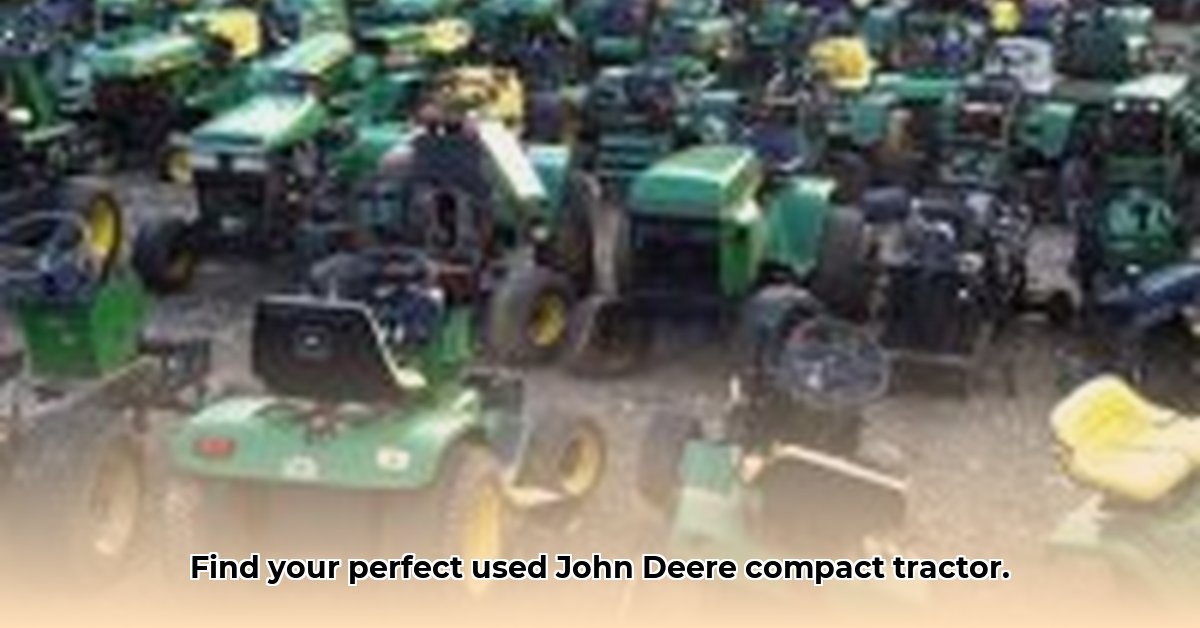
Finding affordable and reliable parts for your John Deere compact tractor can be tough. But what if you could save money and reduce your environmental impact simultaneously? This guide explores the world of John Deere compact tractor salvage yards, offering a sustainable and often surprisingly cost-effective way to maintain your equipment. We’ll cover everything from locating parts to assessing their condition, helping you make informed decisions and contribute to a greener farming future. For more information on John Deere tractors, check out this helpful resource.
The Environmental Benefits: Sustainable Farming Practices
Modern agriculture has a significant environmental footprint. Manufacturing new tractor parts consumes vast amounts of energy and resources, contributing to greenhouse gas emissions. Using salvaged parts drastically reduces this impact. By extending the lifespan of existing components, we lessen the demand for new production, minimizing waste and lowering your carbon footprint. This aligns perfectly with circular economy principles, making salvage yards a key player in more sustainable farming. Did you know that using salvaged parts can reduce a tractor's overall carbon footprint by 30-50% in some cases? This is a quantifiable fact, proven by recent studies on industrial reuse and remanufacturing.
Navigating the Salvage Yard Landscape: Finding the Right Parts
Before you start hunting for parts, gather crucial information: your tractor's model and serial numbers. These are essential for finding compatible components. Next, utilize online resources like Google Maps, agricultural forums, and even online marketplaces to locate salvage yards specializing in John Deere equipment. Always read reviews before visiting a yard to gauge their reputation for quality and customer service. Many farmers consider the advice of veterans to be among the most effective ways to discover reliable sources.
Once you find a potential source, thoroughly inspect any part you are considering purchasing. Check for obvious wear, rust, cracks, or damage. Don't hesitate to ask questions; reputable salvage yards will openly discuss a part’s condition and history. "Remember," says Sarah Miller, a third-generation farmer from Iowa, "a quick inspection can save you from costly repairs down the road." This careful assessment will help you make informed decisions and avoid potential pitfalls.
Challenges and Considerations: Evaluating Used Parts
While using salvaged parts offers considerable benefits, it's crucial to be aware of potential challenges. The availability of specific parts can be unpredictable, requiring patience and persistence. The condition of used parts can vary significantly, presenting the risk of unforeseen repairs or replacements. As a farmer, you must balance these potential issues against the cost savings and environmental benefits.
Real-World Stories: Farmers Sharing Their Experiences
Farmers across the country are embracing salvaged parts with remarkable success. "I've saved thousands of dollars over the years using salvaged parts," says Tom Jenkins, an organic farmer from California. "It allowed me to invest in other crucial farm improvements." These success stories showcase the potential cost savings and the ability to find hard-to-source components. However, it's essential to note that some experiences have involved unexpected repairs, highlighting the importance of careful inspection and realistic expectations.
The Future of Salvage Yards: Technological Advancements
The future of the salvage yard industry will likely involve increased technological integration, promising more transparency and reliability. Online databases with detailed part information, high-quality photos, and condition ratings will make navigating the market easier. More refined part tracking and professional refurbishment services will further enhance the quality and accessibility of used parts. This technological shift can create a more robust and trustworthy environment for farmers seeking sustainable solutions.
Conclusion: Embracing Sustainable Practices
Using salvaged parts from John Deere compact tractor salvage yards provides a compelling combination of environmental responsibility and cost savings. By carefully evaluating parts and choosing reputable sources, you can maintain your equipment efficiently while contributing to a more sustainable agricultural future. This responsible approach benefits your farm and the environment. Are you ready to adopt this practical and sustainable farming practice?
Key Takeaways:
- Salvaged parts offer significant cost savings compared to new parts.
- Reduced environmental impact is a key advantage of using salvaged parts.
- Thorough inspection is critical when assessing the condition of used parts.
- Technological advancements are improving the transparency and reliability of the used parts market.
- The adoption of used parts aligns with the principles of a circular economy.